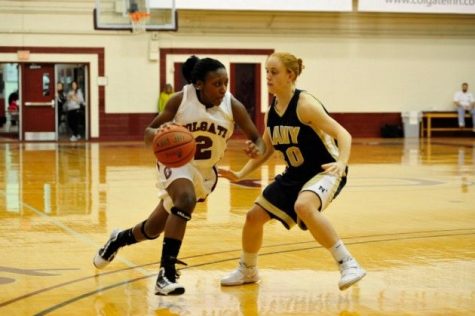O Rafa, Where Art Thou?

Where is the Rafael Nadal that dominated Roger Federer in the 2008 French Open final at Roland Garros? How about the one that dethroned him at Wimbledon in the same year? Or the one that, until this past May, had a 31-game winning streak on clay?
A year ago at this time, the roles were reversed in the world of tennis. Spaniard Rafael Nadal held the World No. 1 Ranking, while Roger Federer was No. 2. Nadal had won three out of the previous four Grand Slams, all against Federer. At the 2009 Australian Open, Nadal’s victory caused Federer to burst into tears and put Rafa within a U.S. Open victory of achieving the career grand slam.
Nadal’s fall from grace began on May 31, 2009 at the French Open, when he lost in four sets to Robin Soderling, possibly the greatest upset in the tournament’s history. The Spaniard was the four-time defending champion and had never dropped a match in the competition, but fell quietly to a man who had never made a Grand Slam final. His decline, however, may have been foreshadowed when Federer defeated him handily in the final of the Mutual Madrilena Madrid Open by the score of 6-4, 6-4.
In June 2009, after Federer had won his first Roland Garros title and completed a career grand slam, terrible news about Nadal reached the press. Rafa had developed tendinitis in both knees, and was forced to withdraw from his usual pre-Wimbledon tournaments, and finally the main event itself. It was the second major in a row in which he would fail to defend his championship. Federer ended up winning Wimbledon, usurping Nadal’s title reign once again, as the Swiss star reclaimed the world number one ranking after almost a year of being Nadal’s escort. Nadal returned to the court in time for the hard court season and participated in the 2009 U.S. Open. In it, Nadal had a decent performance, reaching the semifinals before falling to eventual champion Juan Martin Del Potro. The Argentine dropped Nadal in straight sets, making tennis fans all over the world wonder if this was the end of a young career.
Nadal’s style is composed of speedy footwork, heavy groundstrokes and aggressive court coverage. These characteristics have led to the widely-espoused claim that Nadal is considered to be the greatest clay court player ever. Since the clay slows the game down, Rafa has been able to use his speed to his advantage. His style has been both praised and criticized by tennis analysts and fans alike. Those who criticize him note the risk to which he is exposing his body and the always-present threat of a career-ending injury. Those who praise him admire his tenacity and his determination to go after every ball. Nadal’s strategy takes a huge toll on his knees and increases the chance of detrimental injuries, exemplified by his recent injury bouts. Most recently, he was humiliated by Andy Murray in the quarterfinals of the Australian Open, dropping the first two sets before being forced to retire during the third. Nadal will now be out for four weeks, at the very least.
Rafa will most likely be back in time for the start of the clay season, where he has dominated the past five years, but he will have everything to prove. After Federer completed his resurgence this past Sunday by winning his first Aussie Open in three years, the Spaniard most certainly has a chip on his shoulder. Nadal has been shaky lately, and for him to be considered as his good as his old self again, he will need to have a strong clay season. He must retake his French Open title by returning to his 2008/early 2009 shape, and stop his fall down the world rankings, in which he is currently fourth. His nemesis Roger Federer, on the other hand, will go to Paris as the defending champion, but at the same time free of pressure, as his cool composure in the Australian Open final showed. 16 career Grand Slam titles speak for themselves.If Rafa has a weak clay season and fails to win in Paris, then one may start wondering if the six-time major champion still has what it takes.
Nadal’s career, at the moment, seems to parallel a Shakespearean tragedy. It depicts the quick rise of the protagonist and then the sometimes fast, sometimes slow, yet always painful fall. Spain’s favorite son has a lot to prove in the coming months, but given his lion-like heart and perseverance, I would not put it past him to return to his past form, and reclaim his rightful place alongside Roger Federer in the dynamic, dominating duo that the tennis world has enjoyed for the past five years.


